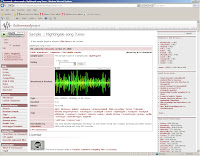Throughout the production of our coursework project we have picked up several skills using various pieces of technology.

We had to construct and organise our blog in such a way that it would be an asset to our production, rather than a burden. We learnt that, in fact, it was a very useful tool, and without it, our production may have not been organised so easily.
Presentation
In order to present our initial pitch, as well as audience research and research of conventional features of film openings, and more, we used an online presentation tool called Prezi which was more technologically advanced than traditional presentation software such as Microsoft Powerpoint.
 We learnt that it would help us to present in a more interesting and structured way, which would help the viewers of the presentation to understand it and give us very helpful feedback, and in turn this ultimately would help us improve the final appearance of our production.
We learnt that it would help us to present in a more interesting and structured way, which would help the viewers of the presentation to understand it and give us very helpful feedback, and in turn this ultimately would help us improve the final appearance of our production.Filming
We also learnt the industrial conventions of filming. This includes everything from camera angles, to the settings inside the camera, to the framing of the shots, and more. We learnt that this is often a very time consuming process initially, but in the long-run it saves time and disappointment when we find that the footage we got is actually how we wanted it. The camera angles and techniques helped to convey the narrative of the film opening so they were important to consider. We learnt that the settings inside the camera were very important because they massively affected the appearance of the final footage – for example, we filmed some footage in the graveyard on different exposure and saturation levels to that of the footage in the woods, and we discovered that this gave the footage a very different feel to what we had intended. Fortunately, the camera we used (Nikon D90) gave us the freedom to change such settings, whereas on some, more basic cameras, these settings are unchangeable. Every other element of the footage in the graveyard was as we had planned, and luckily we were able to change the brightness and saturation in the editing software (Adobe Premiere) to similar levels to what we had intended, so not all was lost.
We learnt that the framing of the shots was very important to consider, including the 180 degree rule, the rule of thirds, deep and shallow focus and more, as these help to contribute to the continuity of the footage and help define what the audience actually pays attention to when watching the opening.

Editing
The editing software we used proved to be a very useful tool for us. We used it to produce and organise the sequence of shots we see in our preliminary task, as well as producing the animatic of our final opening, the rough cut, and finally the film opening.

Personally, I had used the software previously - but even so, I did not have as much experience in it as I had thought, so using the software to produce our media products was a learning curve for me. I learnt how to cut the clips to the desired length, how to rearrange the order of the footage, how to add a soundtrack and - perhaps most importantly – how to make the footage look like a continuous sequence. I also learnt how to fade footage in and out, how to add titles, and how to adjust the brightness, contrast, hue and saturation levels, to name a few.

Soundtrack
For the soundtrack, we discovered that there were many restrictions. We had to find a suitable, copyright-free soundtrack, which was considerably difficult, but we learnt from the preliminary task that it was more appropriate than composing our own.
In light of this, we found some compromises necessary, but luckily we discovered a website called freesound.org which was a source of a very wide variety of copyright-free sounds, and this provided us with some very effective and suitable pieces.
Youtube
We needed somewhere that we could upload our footage to, in order to allow us to post our preliminary task on our blog, as well as our animatic, our rough cut, and our final production.
By allowing us to put our media products on our blog, we gained useful feedback from our teachers as well as our target audience, and we learnt how we could improve our media products to make them more appealing to the final viewer.























